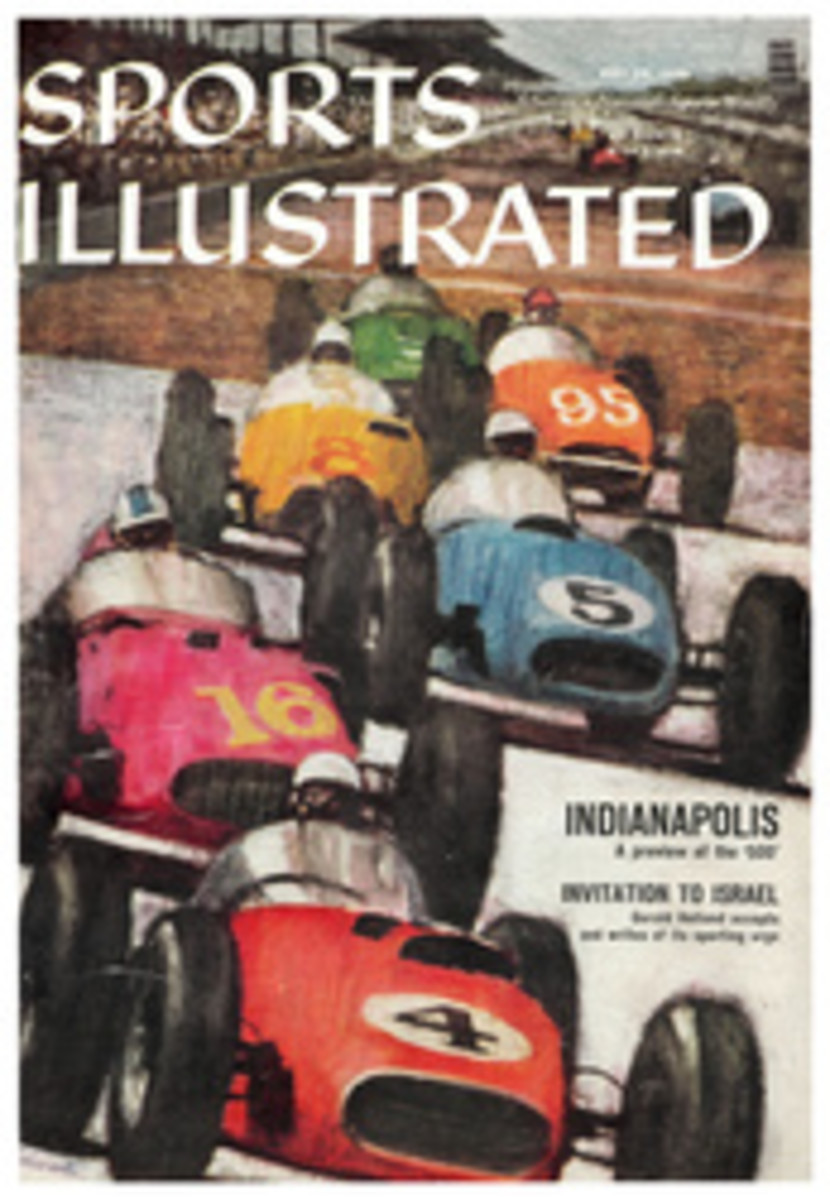
FROM A WALK TO A CANTER
In our first lesson you learned how to lead your horse, how to hold the reins and how to mount and dismount correctly. You also learned the basic riding position. Now the time has come to see how that position works when the horse is moving at his three natural gaits: the walk, the trot and the canter. Actually, it does not change much except at the trot. At that gait you must learn to post, a procedure which is not nearly so mysterious or difficult as nonriders are often inclined to think. But, like a child, you must learn to walk (your horse, that is) before you can run. Turn page for Wright's step-by-step instructions.
At the walk
Now you are ready to move, but before you do you must know several things about controlling your horse once he is in motion. You start and then maintain control by the proper use of the natural aids, which are your hands, your legs—and your seat. To start, hold the reins lightly but firmly so you have a direct, "feel-able" contact with the horse's mouth. Nudge the horse gently with your legs. Your horse will begin to walk. Use your legs to prevent the horse from stopping, and your hands to restrain him from moving into a faster gait.
Stopping and backing
Stopping a walking horse is easy, if you know how. (Actually, the type of horse you will be riding at this stage requires little encouragement to stop.) When you are ready, close your hands on the reins; the little fingers exert a squeezing action which increases the pressure on the reins and on the horse's mouth. This alone may bring him to a halt, but if it does not you should increase the pressure. Now that your horse is halted, try backing him. Use your hands in the same manner as you did when pulling to a halt from the walk. You will feel the horse's weight shift from the fore to the hindquarters before he starts moving into reverse. Give him time to make that shift. He will back a few steps. Ease off the pressure when he has stopped. That is his reward.
Guiding your horse
The next thing is to learn how to steer your horse so that you can ride where you, and not the horse, care to go. At first you will feel a terrible temptation to look down at yourself and the horse—just as a novice dancer wishes to watch his feet. Don't do it. Look ahead at where you are going; this not only helps keep you in the correct position, but when you turn your head in the direction you wish the horse to go (right) the subtle change in your weight helps direct him. By doing these things correctly you will set the scene for the use of the most important aid—the reins. You have already established a light contact with the horse's mouth—evenly in each hand. Now to turn left pull the left hand slightly toward your body, thus putting more pressure on the left side of the horse's mouth. (To oversimplify slightly: if the horse's head is facing the way you want to go, the rest of the horse will follow. A well-schooled horse does not need to have his head pulled around, but occasionally the beginner will encounter an animal with an active interest in returning to the stable to munch hay. You can stop him. Keep aiming him where you want to go.) Try your turns first in the simplest manner, at a walk both to the right and left. Next, try circles to the right and left. Be sure you look in the direction that will close the circle.
Starling to post, you move forward and up from your original position (shaded line) as the horse goes into a trot. The forward motion of the horse's hind leg gives you the push that helps make posting less of an effort and more comfortable for rider.
At the peak of the post, your seat is well off the saddle as the diagonal pairs of hoofs strike the ground, thus sparing you the jolt of the impact. Your knee is the hinge and, along with the ankle, provides you with a natural shock absorber.
Posting the trot
Once you have mastered yourself and your horse at the walk and are able to turn, stop and back, you are ready to progress to the next gait: the trot. This means that you must learn to post—the up-down, up-down movement that is so often misunderstood. It is no affectation but an aid and comfort to both horse and rider. When a horse trots, his legs move in diagonal pairs, making a two-beat rhythm as the hoofs hit the ground (below). The forward propulsion, or push—both for the horse and you—comes from behind, which is important to understand as it affects your movements and position in the saddle at all gaits. To start the gait use your legs or heels—your horse will go from a walk into a slow trot. For a few moments just sit there letting your knees and ankles act as shock absorbers. You will feel a bump, bump against your backside as the pairs of hoofs hit the ground, pushing or jolting you out of the saddle. Now, using those same leg aids, urge your horse into a faster trot. The jolt is far more pronounced, and you will thump that saddle at a more rapid rate as those diagonal pairs of hoofs hit the ground faster and faster. Time to start posting. This is what it means: when a pair of legs move forward you are pushed forward and upward by the movement. You help by using your muscles, particularly in the thigh, and hold yourself in the air while the hoofs strike the ground, thus avoiding the jolt, then let yourself down so you can be pushed forward and up again (see series below). You will note from the drawings that you do not stand up in the stirrups or heave yourself out of the saddle. Actually, the horse does most of the work by giving the push while you practice to develop the timing and coordination. Obviously, it is possible to post with either set of legs, which is what is meant by being on the right or left diagonal. To change diagonals simply sit through one bounce and catch the next push up. You're then on the opposite diagonal.
In the sequence below, the blackened foreleg indicates how you can tell which diagonal you are posting with by watching the horse's shoulder. If you are down when the right shoulder is back then you are on the right diagonal. Note also the bounce of the horse, indicated by the red line, as all four feet leave the ground at the trot's fullest extension. (Don't be confused: right or left does not mean right or wrong.)
At the canter you will find that the upper part of the body is slightly more forward than at the walk. If you move from a trot into a canter remember to come down to a slow, sitting trot and also use your legs to urge horse to change gaits.
Close contact of the seat and thigh is necessary at the canter. Also notice that the turning principles at a faster gait are the same as at the walk. Using the reins, the rider looks in the direction of the turn, applying a light leg pressure to aid horse.
Sitting the canter
You have learned how to get yourself out of the saddle when posting the trot; now it is time to learn how to stay in the saddle at the canter. The canter, lope or hand gallop is the third of the natural gaits of the average horse and is traditionally described as a three-beat gait. The drawings below show a simplified version of what happens when a horse is cantering. Notice that he starts out on the left hind foot, rolls onto his left front and right rear foot, then onto his right front foot. (Of course, this pattern of footfalls can be executed in reverse, starting with the right hind foot, etc. This is known as cantering on different leads, as one of the front legs seems to be leading the movement.)
You can make your horse canter either by urging him on from a slow trot or, with some horses which have been trained to canter from a walk, by turning his head slightly and shifting your weight over the opposite shoulder. Once he is cantering, relax. Stiffening your backbone or pushing your weight down into the stirrups will send you bouncing out of the saddle. You probably will pound the saddle for the first few strides while you adjust to the new rhythm and the impression of speed. But once you are with the horse you will find this rolling movement of the canter (see below) the greatest pleasure to ride. If at this time (or any other time in riding) you should lose your stirrup don't look down to try to find it. Keep those eyes looking ahead at where you are going, and that, in turn, will help you keep your balance. Keep your foot in position and you probably will catch the stirrup with no difficulty. If you have mastered these two lessons you should be capable of riding a well-broke horse with safety and comfort.
ELEVEN ILLUSTRATIONS

